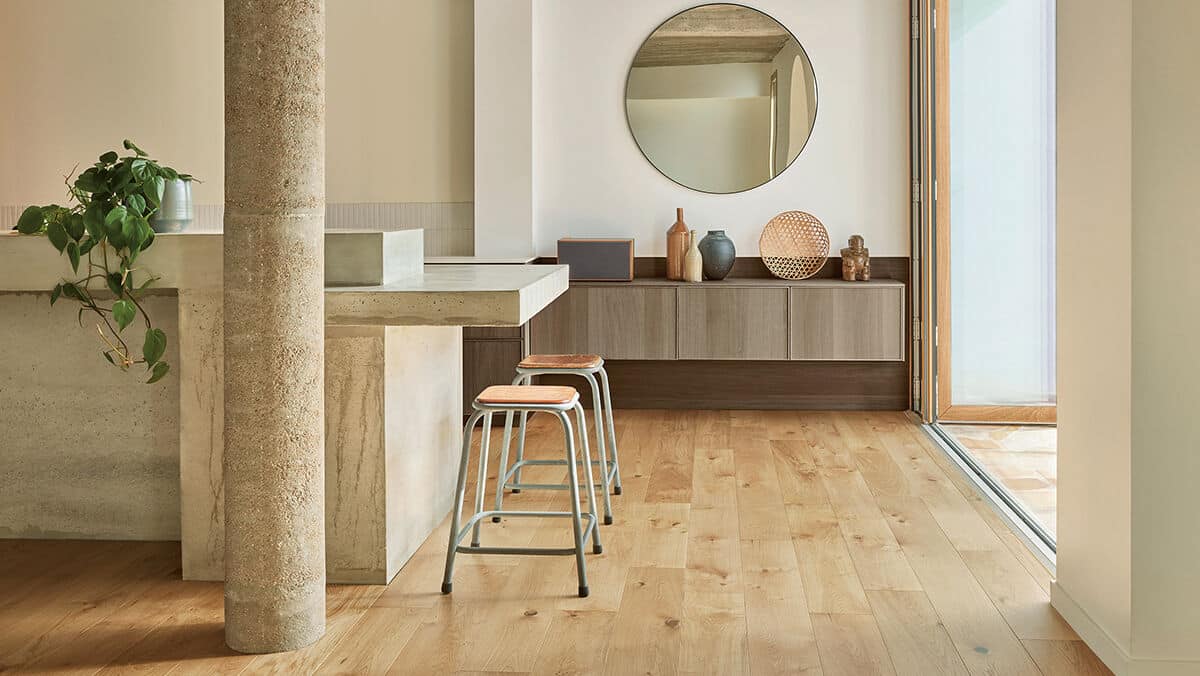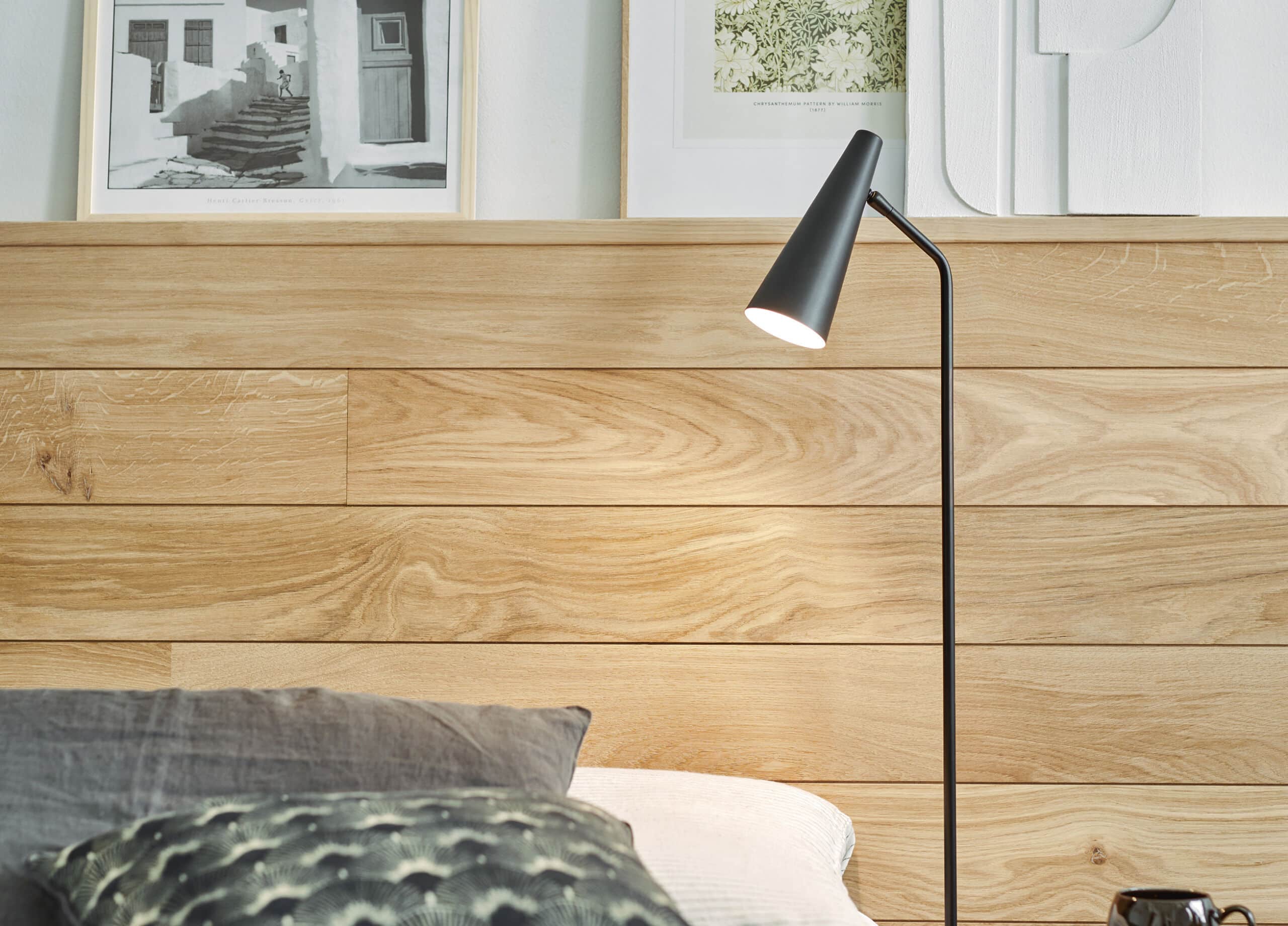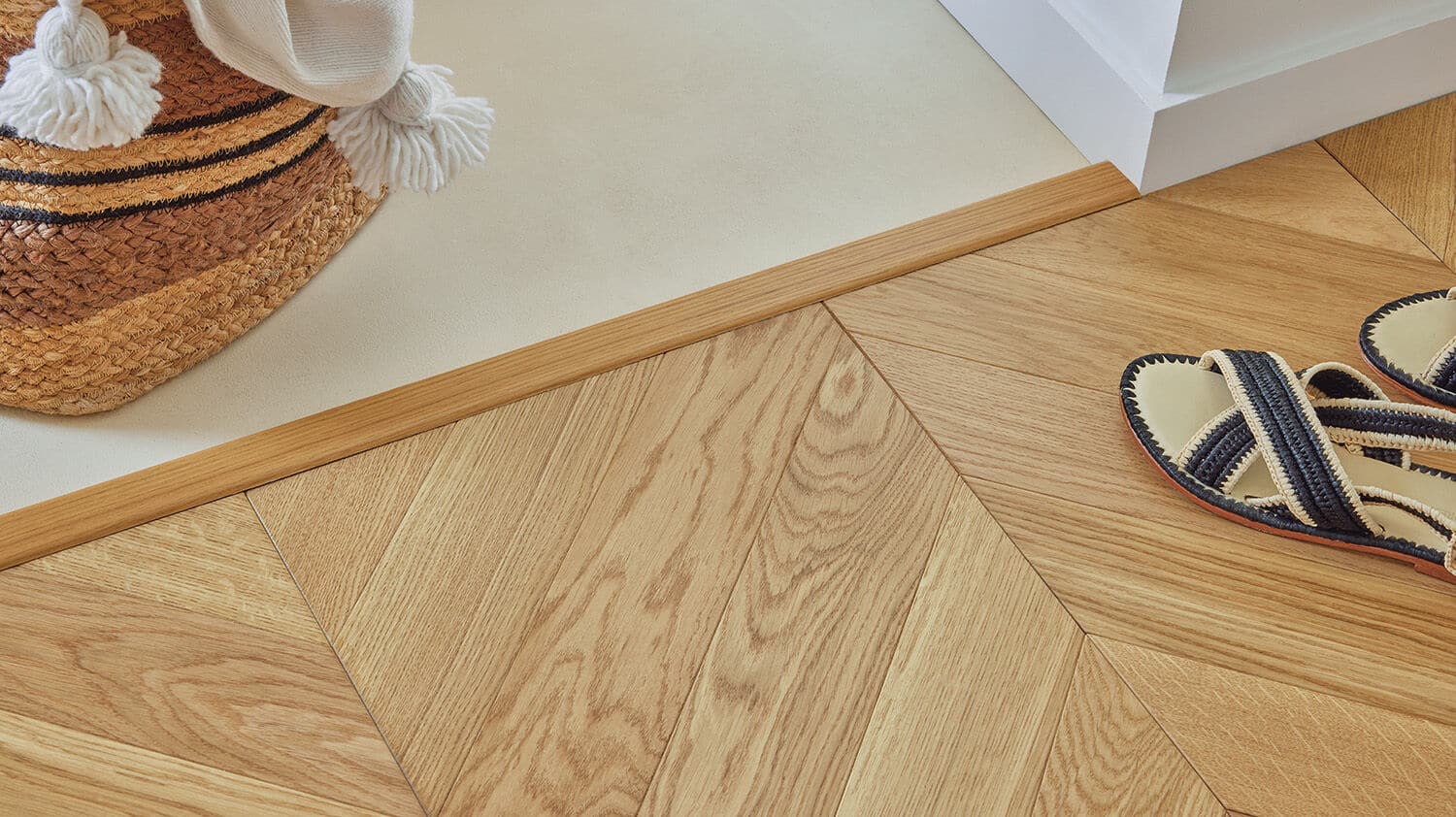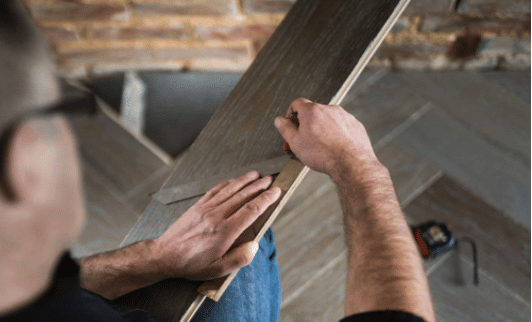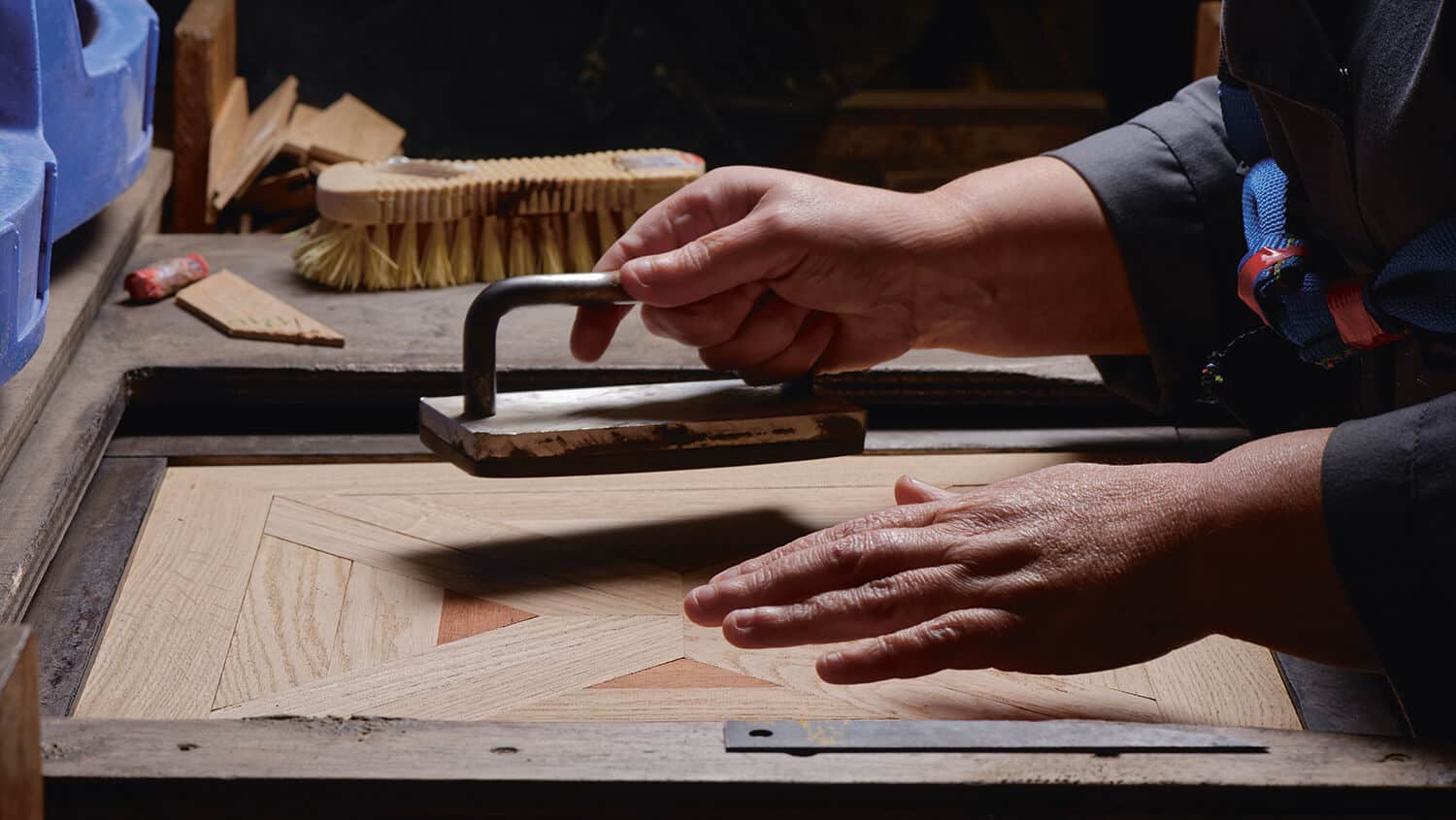Tips for laying Herringbone wood flooring
Chic and elegant, herringbone wood flooring is back in fashion. The boards are all the same size and are laid at right angles to each other to create a triangular pattern. This type of installation is too technical for the amateur DIYer: in particular, a precise layout plan must be created and the cuts and measurements must be highly accurate.
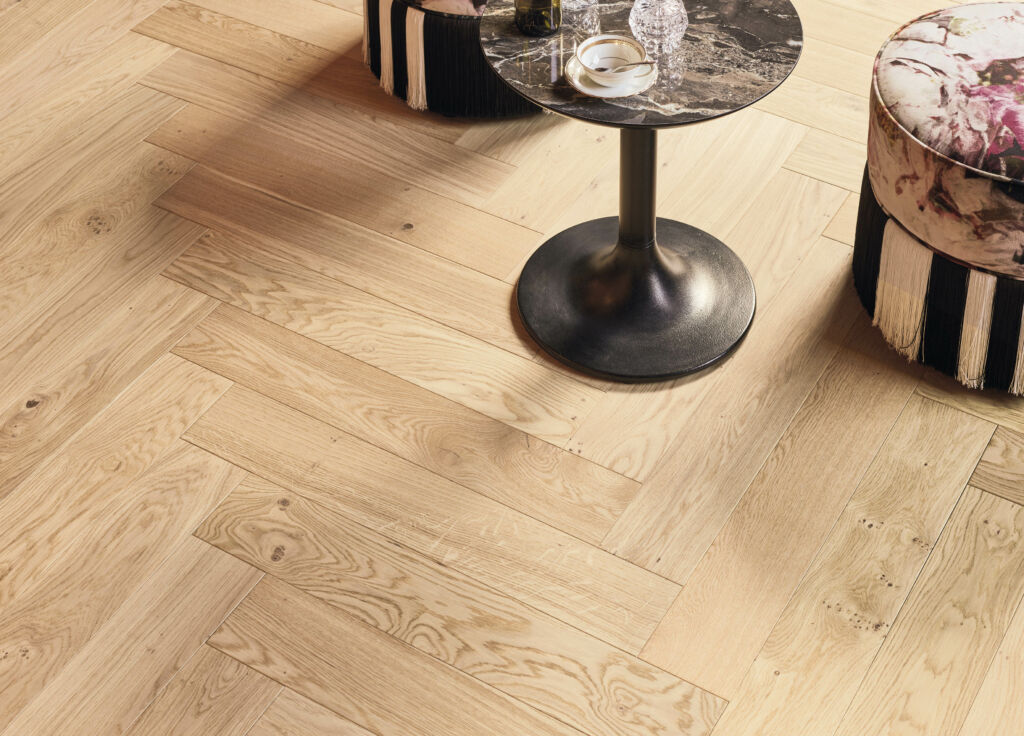
Herringbone wood flooring installation specificities
Laying herringbone wood flooring is a technique that dates back to the 18th century. It was traditionally used in chateaux, old buildings or Haussmann style apartment buildings. Herringbone wood flooring, which consists of laying boards of the same length at right angles to each other, requires significant technical skills and a precise layout plan. Once installed, the boards create a striking triangular pattern that blends well with both old and new style interior decoration.
Preparing to lay herringbone wood flooring
There is a major preparation step before starting to lay herringbone wood flooring.
- The flooring must be acclimatised before it’s laid. To do that, lay the boards flat for 48 hours in the room where the floor is to be laid, without unpacking them and without placing them directly on the floor, so that the wood can adapt to the ambient temperature and humidity;
- To guarantee perfect installation, the floor must be clean, flat and dry;
- Separate the left and right planks so that they don’t get mixed up during the installation;
- Draw a line representing the room’s centre line: to do so, locate the middle of the wall opposite the main door, use a square to mark the perpendicular line.
The herringbone wood flooring installation technique
To lay your herringbone wood floor, you will need: herringbone wood flooring, skirting boards, Isol 30 underlay, adhesive tape, masking paper, blocks, a tape measure, a pencil, a square, a circular saw, a cutter, a hammer, a pull bar, gloves, Presto Gun glue, wedges, a cloth.
Follow these steps to successfully lay your herringbone wood floor.
1. Unroll the insulating underlay with polyane on the flat, dry floor.
2. Tape the strips together edge to edge and raise them along the foot of the skirting boards.
3. Define the direction in which the herringbone wood flooring should be laid. Usually, the rows are placed in line with the entrance door or on the median perpendicular to the largest source of light. The centre line is marked by a metal ruler blocked on the floor on the left side to guide the reference row. Mark the centre line between the “left part” and the “right part”.
4. Open 2 to 3 packs. Separate the right and left parts of your herringbone floor while mixing the shades.
5. Assemble the reference row. Fit 6 herringbone planks (3 left/3 right) together after applying adhesive to the tongue at the end to prevent too much slipping when assembling the boards.
6. Place the top tip of the reference row against the wall (using a block) and the left tips against the ruler to follow the line.
7. Continue laying the boards along the row until the end of the line, remembering to apply adhesive to the tongues.
8. Regularly check the line alignment and the joints between the planks.
9. Once you reach the end of the line, resume laying the rows on either side of the reference row.
Filling in the spaces along a wall:
1. Assemble 6 planks (3 left/3 right) and glue the tongues.
2. Mark the base of the triangle on the back of the planks. Mark the cutting lines and saw on the back of the wood flooring to get a better finish.
3. Apply adhesive to the plank tongue. Place the triangle so that it fills the space against the wall. Fit it into the adjacent planksusing a pull bar. Insert the wedges.
Filling a corner:
1. Assemble 6 planks (3 left/3 right) and glue the tongues.
2. Trace a cut line from the top to the middle of the base and cut the triangle using a circular saw.
3. Apply adhesive to the tongue and fit the triangle using the pull bar. Insert the wedges
Filling in the ends of rows:
1. Measure both sides of the corner to be filled.
2. Draw a cut line on the back of a board and cut the triangle using a circular saw.
3. Apply adhesive to the tongue and fit the missing board part using the pull bar.
4. Insert the expansion gap spacers.
Leave the room empty for 24 hours to allow the wood to settle.
10. Remove the expansion gap spacers.
11. Finish the installation by covering the expansion gaps using the appropriate accessories (skirting boards, radiator rings, threshold bars, etc.).
Note: expansion gaps are essential when laying wood flooring. They should be between 5 mm and 8 mm for glued wood flooring and at least 8 mm for floating wood flooring.
Laying herringbone wood flooring requires a specific technique that only an experienced DIYer can master. If you don’t feel comfortable enough to lay the wood flooring yourself, don’t hesitate to ask the Panaget network expert craftsmen for advice.
For further information, download the tip sheet.

